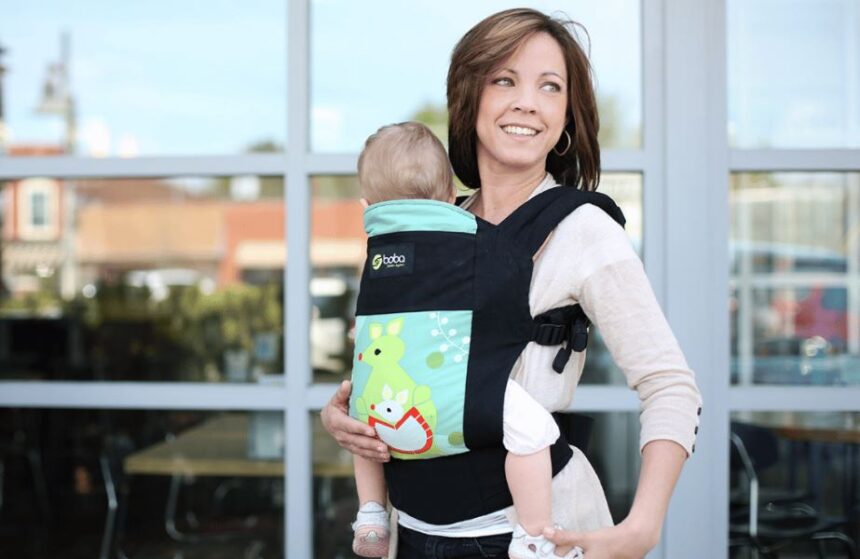I still remember the day I brought my firstborn home from the hospital. I was overwhelmed with joy, exhaustion, and a fair bit of fear. He was so small, so fragile, and every tiny cry tugged at something deep in me. The stroller was clunky. The car seat was too rigid. I needed to feel him close—to feel his heartbeat next to mine. That’s when a friend handed me a gift I didn’t know I needed: a slinguri baby carrier.
It wasn’t just a fabric loop. It was freedom. It allowed me to keep my baby near while moving through my new reality. Over time, I discovered that these carriers—simple, stylish, and functional—were part of a long history of babywearing that spanned cultures, continents, and generations.
In this post, we’ll explore what slinguri are, their types, benefits, how to use them safely, and why this humble piece of cloth has become a must-have for modern parents.
What Are Slinguri?
Slinguri are fabric-based baby carriers designed to hold a baby close to the caregiver’s body, typically wrapping over one shoulder and across the torso. The term “slinguri” is commonly used in Eastern Europe and derived from the Romanian word for “slings.”
They come in various styles but all aim to keep the baby secure and the parent hands-free. Unlike structured carriers, slinguri offer a more natural, customizable fit, making them especially appealing for newborns and young infants.
Types of Slinguri Carriers
Ring Slings
-
Adjustable with rings for quick tightening and loosening
-
Great for short trips or nursing on the go
-
Distributes weight across one shoulder
-
Ideal for newborns to toddlers
Wrap Slings
-
Long, stretchy or woven fabric
-
Offers full body support
-
Requires learning to tie properly
-
Best for extended wear and hands-free tasks
Pouch Slings
-
Simple, non-adjustable loop
-
Easy to use but size-specific
-
Not ideal for long durations
-
Suitable for quick errands
Each type has its strengths depending on lifestyle, climate, and baby’s age. Choosing the right one often comes down to personal comfort and ease of use.
Why Parents Choose Slinguri
Parents around the world are returning to this age-old method of babywearing for several good reasons:
1. Closeness and Bonding
-
Promotes skin-to-skin contact, which supports emotional development
-
Helps babies feel secure and calm
-
Encourages breastfeeding and oxytocin release
2. Convenience and Mobility
-
Hands-free parenting for chores, walking, or errands
-
Easier to navigate crowded spaces or public transport
-
No need for a bulky stroller
3. Physical Development Support
-
Encourages natural hip positioning (M-position)
-
Helps prevent flat head syndrome (plagiocephaly)
-
Babies sleep more soundly when held close
4. Reduced Crying and Colic
Numerous studies suggest that carried babies cry less, especially in the early months. The gentle motion, warmth, and rhythm of the caregiver’s heartbeat create a soothing environment.
How to Use a Slinguri Safely
Safety is a major concern when it comes to babywearing. Always follow T.I.C.K.S. guidelines to ensure your baby’s well-being:
T.I.C.K.S. Rule for Safe Babywearing:
-
Tight: Carrier must be snug with no slack
-
In view at all times: Baby’s face should be visible
-
Close enough to kiss: You should be able to kiss baby’s head
-
Keep chin off chest: Baby’s chin should never rest on their chest
-
Supported back: Baby’s back must be straight and supported
Additional tips:
-
Practice in front of a mirror or with a doll before using with your baby
-
Check fabric for wear and tear regularly
-
Avoid cooking or handling hot liquids while wearing the baby
Common Concerns and Misconceptions
“Aren’t slings dangerous?”
When used properly, slinguri are completely safe. Accidents usually happen due to improper positioning or using low-quality products. Always read the manufacturer’s instructions.
“Won’t my baby get too hot?”
Breathable fabrics like linen, bamboo, or cotton help regulate temperature. You can also dress your baby in layers and remove them as needed.
“Isn’t this bad for my back?”
Not if you’re wearing it correctly. Wrap slings and two-shoulder carriers help evenly distribute weight. If discomfort persists, consult a babywearing educator or try a different type.
Real-World Uses for Slinguri
Parents don’t just use slinguri at home. They’re a practical solution in many situations:
-
Traveling: Great for airports, buses, and navigating tourist spots
-
Shopping: No need for shopping carts or stroller juggling
-
Soothing fussy babies: The closeness can calm crying spells
-
Outdoor walks: Hikes, parks, and beach trips become easier
Example:
Maria, a mom of two from Bucharest, shared how she used her ring sling during a 14-hour train trip across Europe. “I didn’t bring a stroller. Just the sling. It kept my baby close, happy, and even allowed me to nap in peace.”
Benefits Beyond Babyhood
While most people associate slinguri with babies, their impact reaches beyond infancy:
-
Encourages attachment parenting practices
-
Builds caregiver confidence
-
Allows dads and other caregivers to bond deeply with the child
-
Helps with postpartum recovery by encouraging movement and reducing isolation
How to Choose the Right Slinguri for You
When shopping for a slinguri, consider the following:
Fabric Type
-
Cotton: Durable, breathable, and easy to clean
-
Linen: Strong and cool, great for warm climates
-
Bamboo: Ultra-soft and eco-friendly
-
Stretchy blends: Comfortable but may not support older babies
Length and Size
-
Wraps come in sizes 4 to 7—choose based on your body size
-
Ring slings often come in one-size-fits-all but check the tail length
-
Pouch slings must be size-specific to be safe and effective
Brand Reputation
Look for trusted brands with safety certifications and positive reviews. Some popular options include:
-
Moby Wrap
-
Didymos
-
Lenny Lamb
-
KangarooCare
Style and Colors
Your slinguri should fit your style and wardrobe—you’ll be wearing it a lot! Neutral tones work for everyday wear, while bright colors can lift your mood.
Featured Snippet Answer:
What is a slinguri?
A slinguri is a fabric baby carrier, typically worn over one shoulder, that allows parents to carry their baby securely while keeping their hands free. It supports babywearing by promoting closeness, comfort, and mobility, and is especially useful for newborns and young infants.
Expert Tips for Slinguri Success
-
Start early: The earlier your baby gets used to the sling, the easier it becomes
-
Watch tutorial videos: YouTube and babywearing blogs offer step-by-step guides
-
Practice at home: Before going out, use the sling around the house
-
Join a community: Facebook groups or local meetups offer support and advice
The Emotional Impact of Babywearing
Many parents report feeling more connected, confident, and calm when using a slinguri. The emotional bond that forms through close contact helps with postpartum mental health and eases the transition into parenting.
Babies, too, thrive in this setup. They cry less, sleep more, and engage with the world from a safe and secure place.
Final Thoughts:
At first glance, slinguri might seem like just another parenting accessory. But look closer, and you’ll see that they’re so much more. They’re a bridge between parent and child, tradition and innovation, comfort and care.
From ancient tribes to modern urban parents, the practice of carrying babies in slings has stood the test of time. In a world that often encourages separation too soon, slinguri remind us of the power of staying close.
Whether you’re a new parent, a seasoned caregiver, or just exploring babywearing, consider adding slinguri to your toolkit. Your back will thank you. So will your baby.





